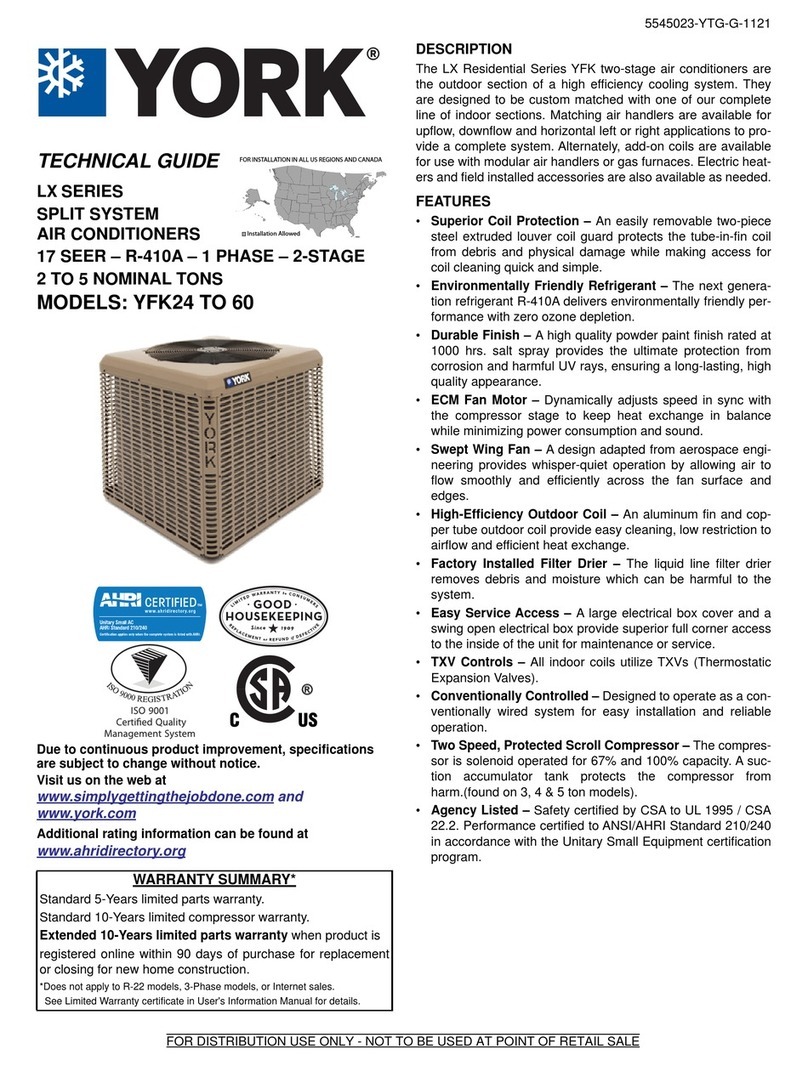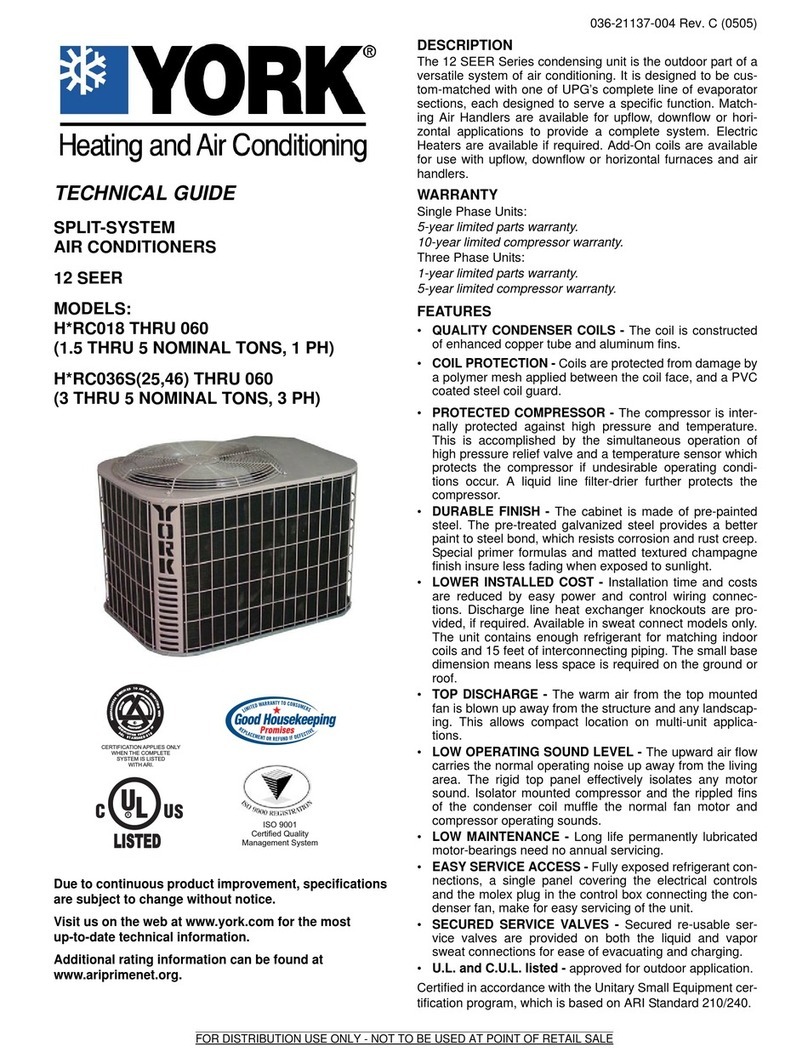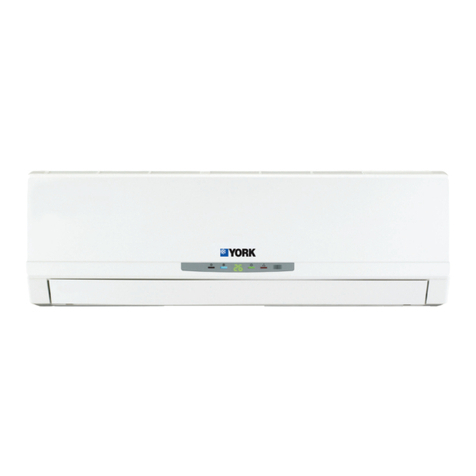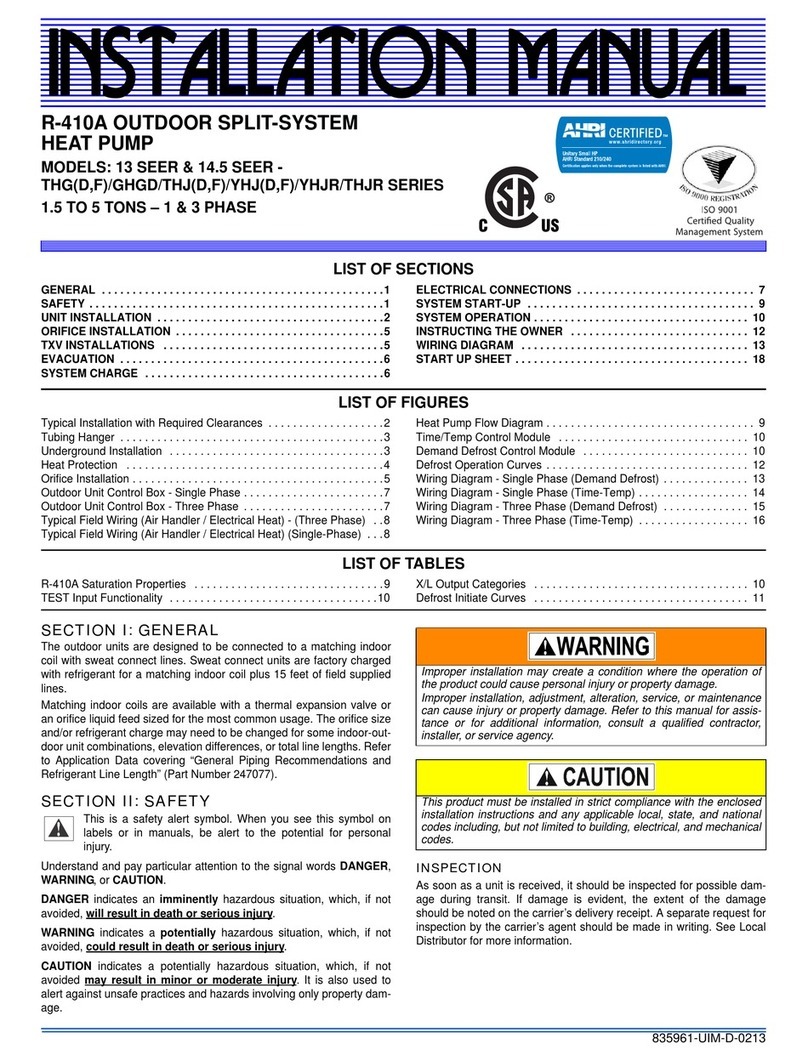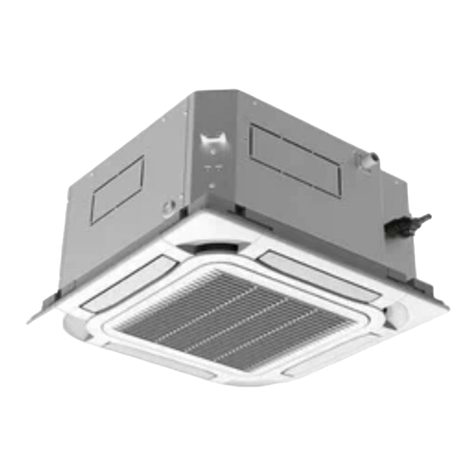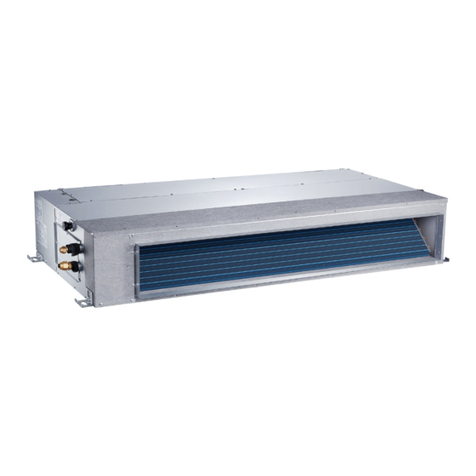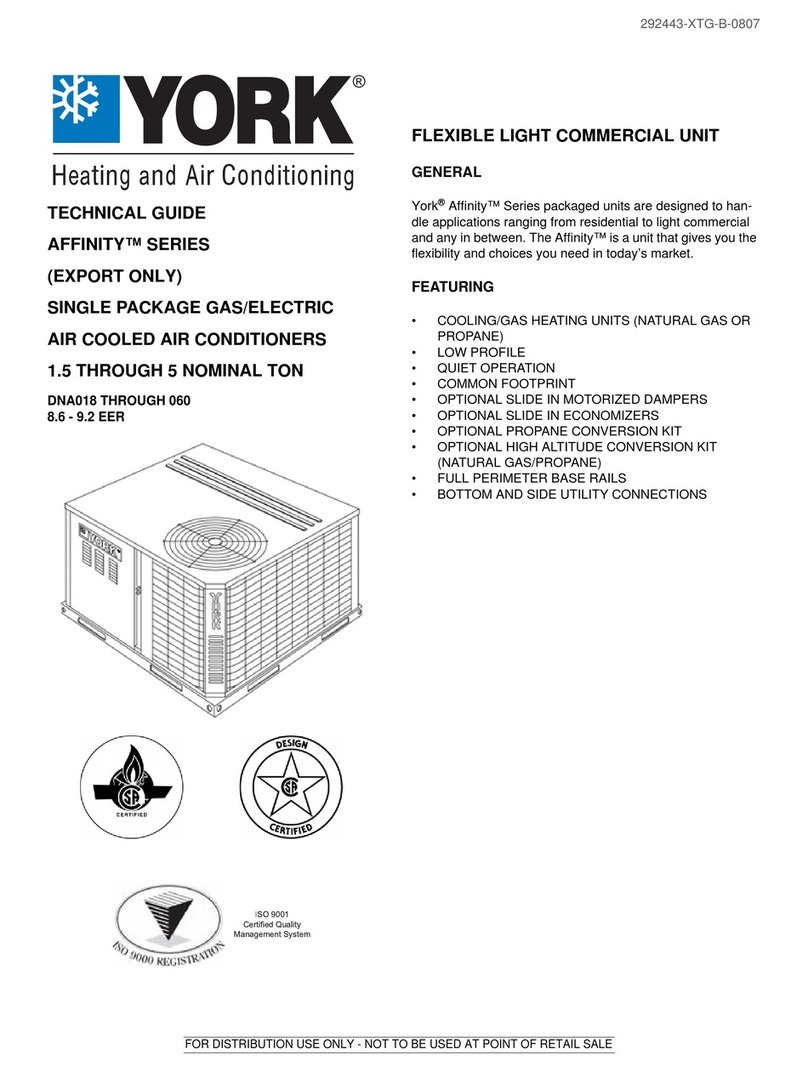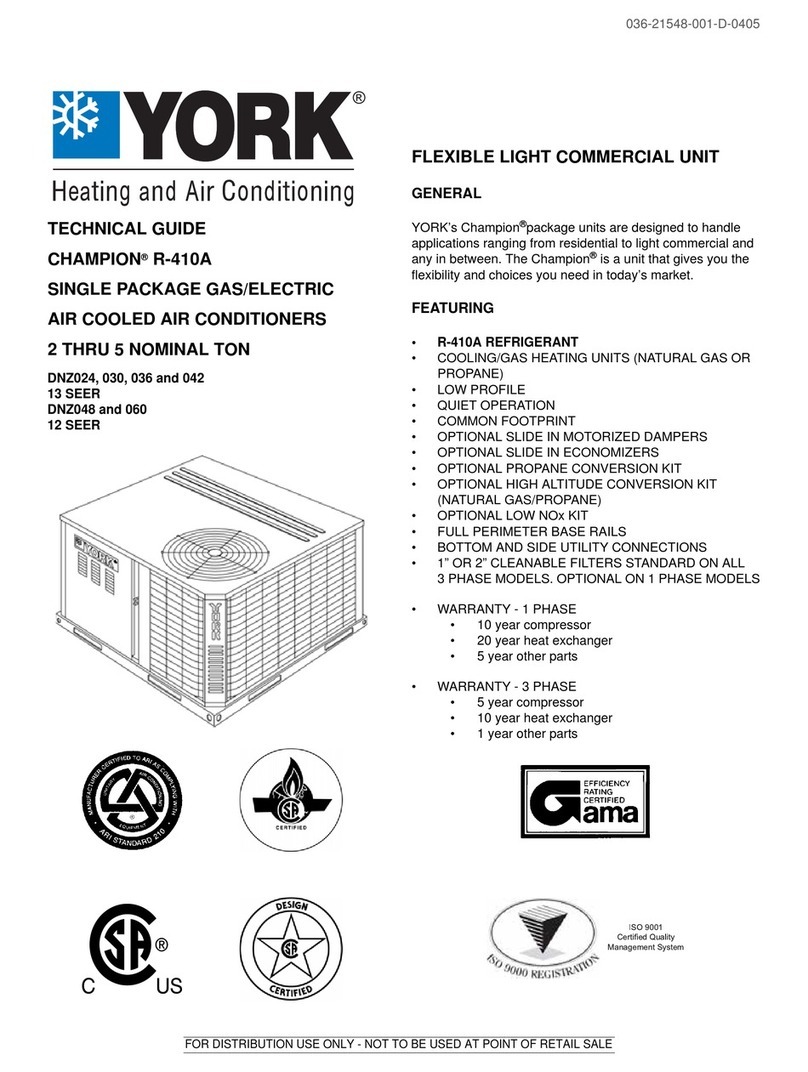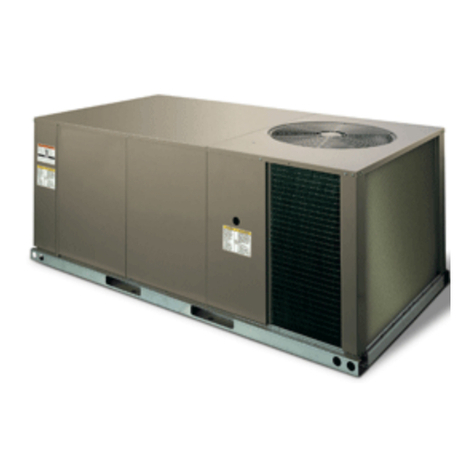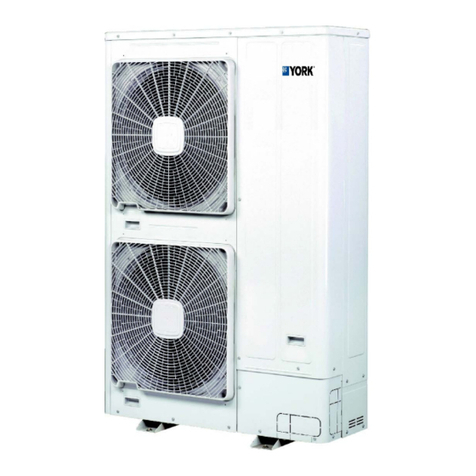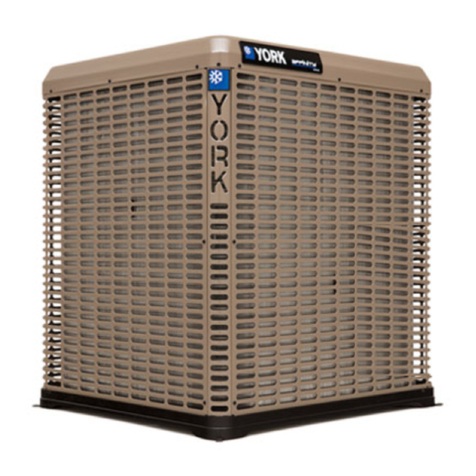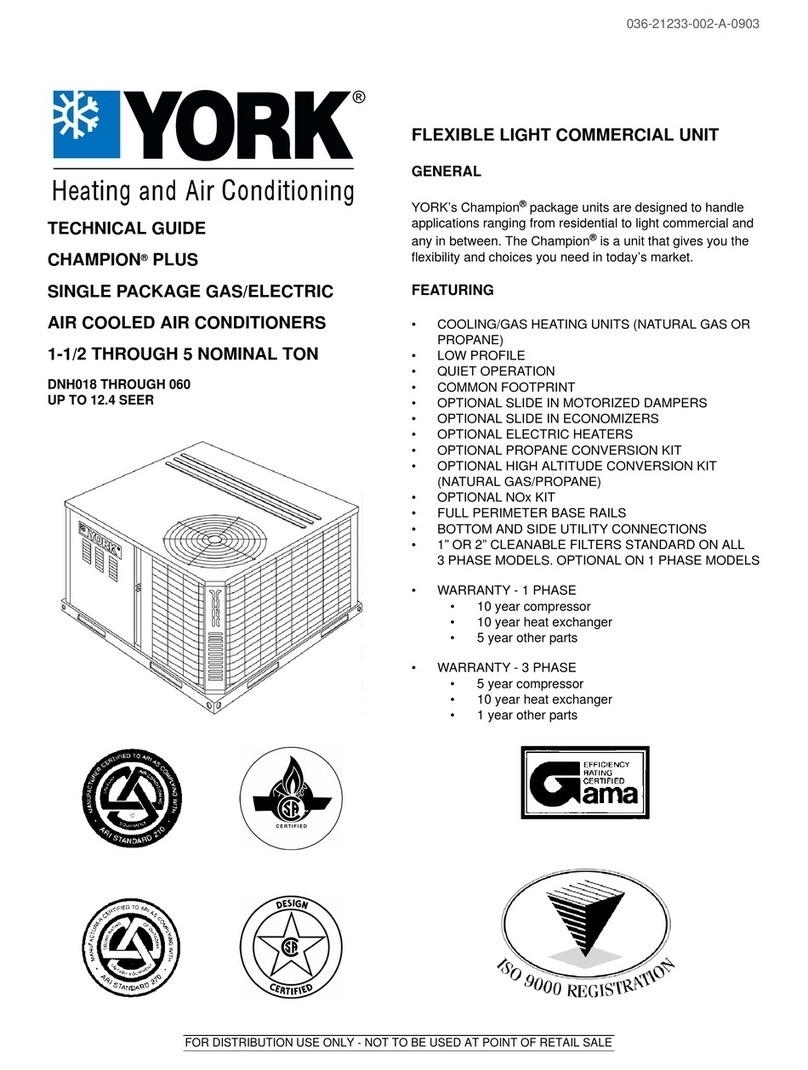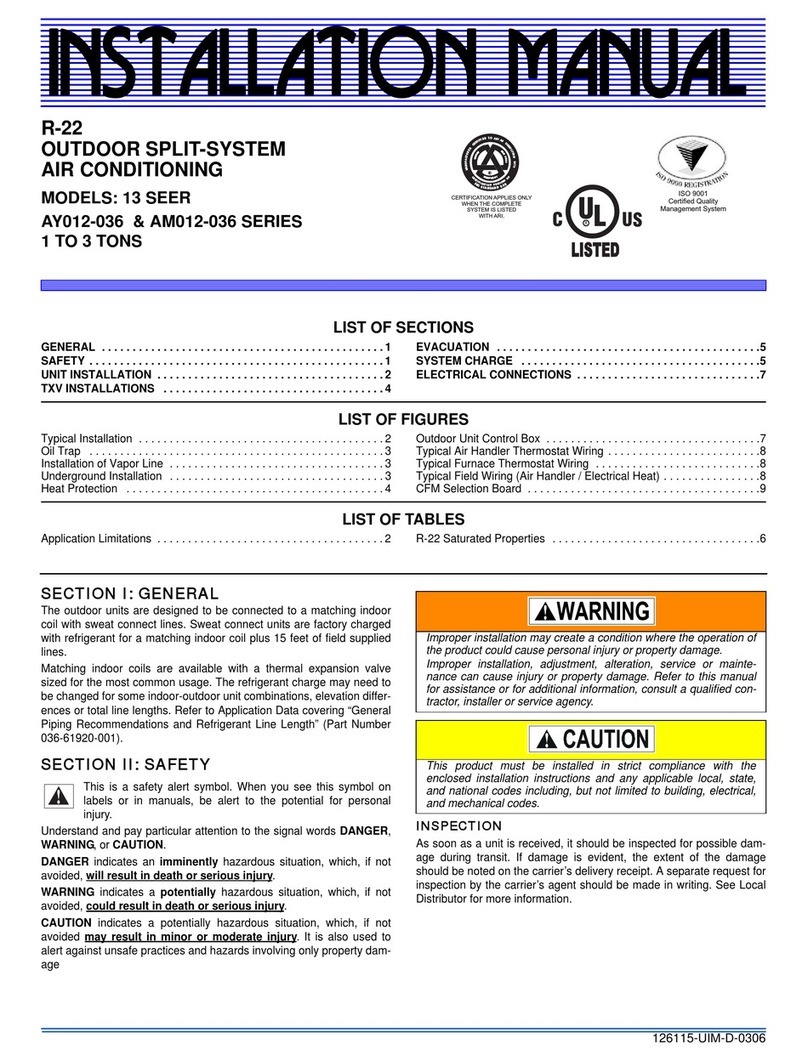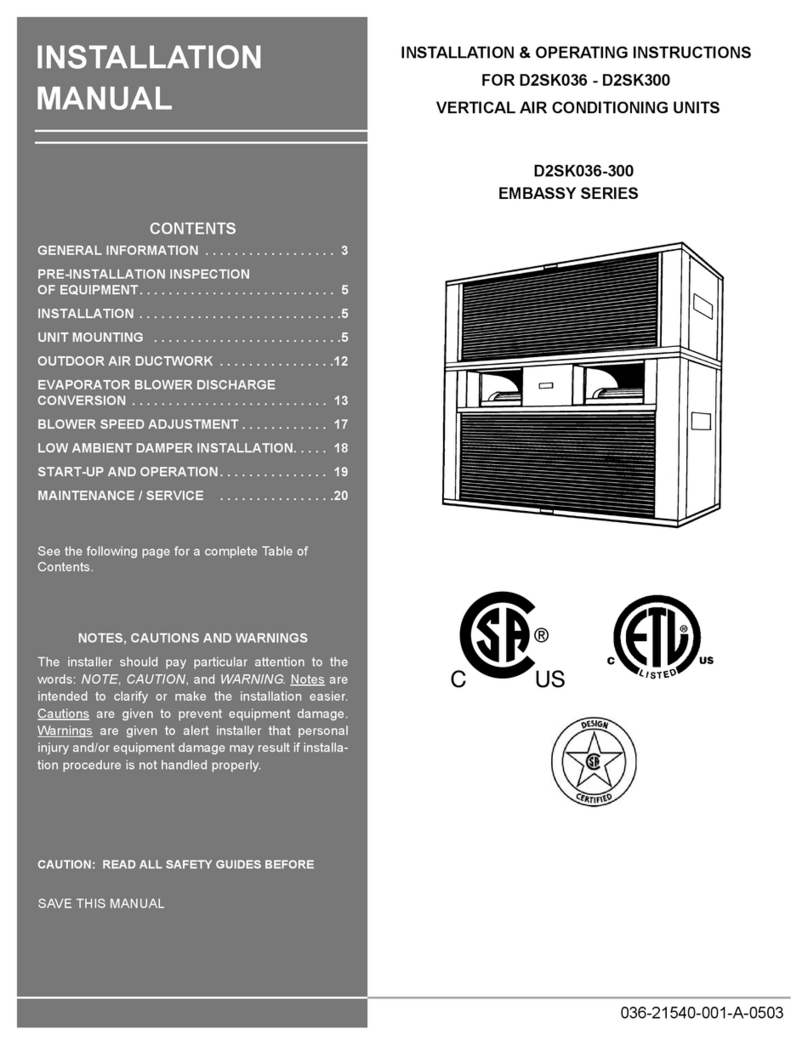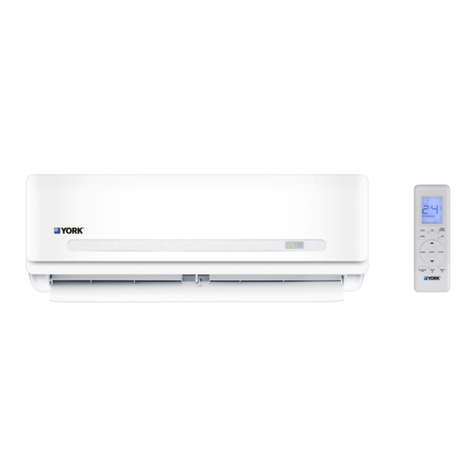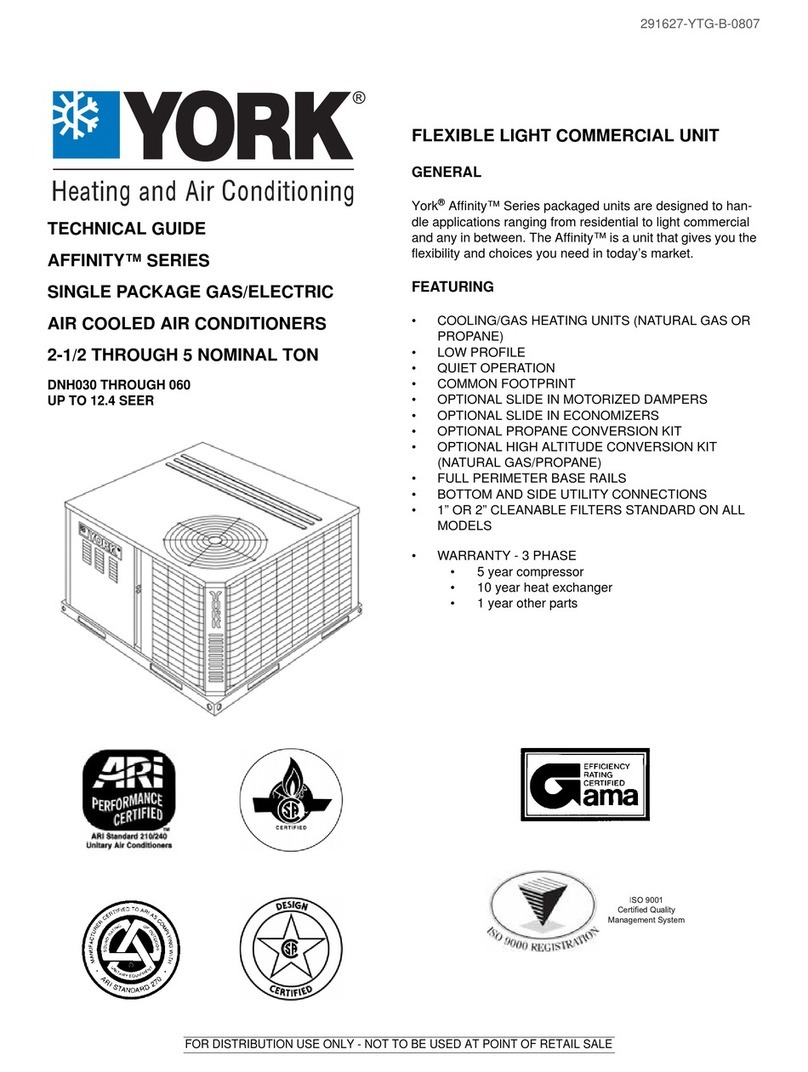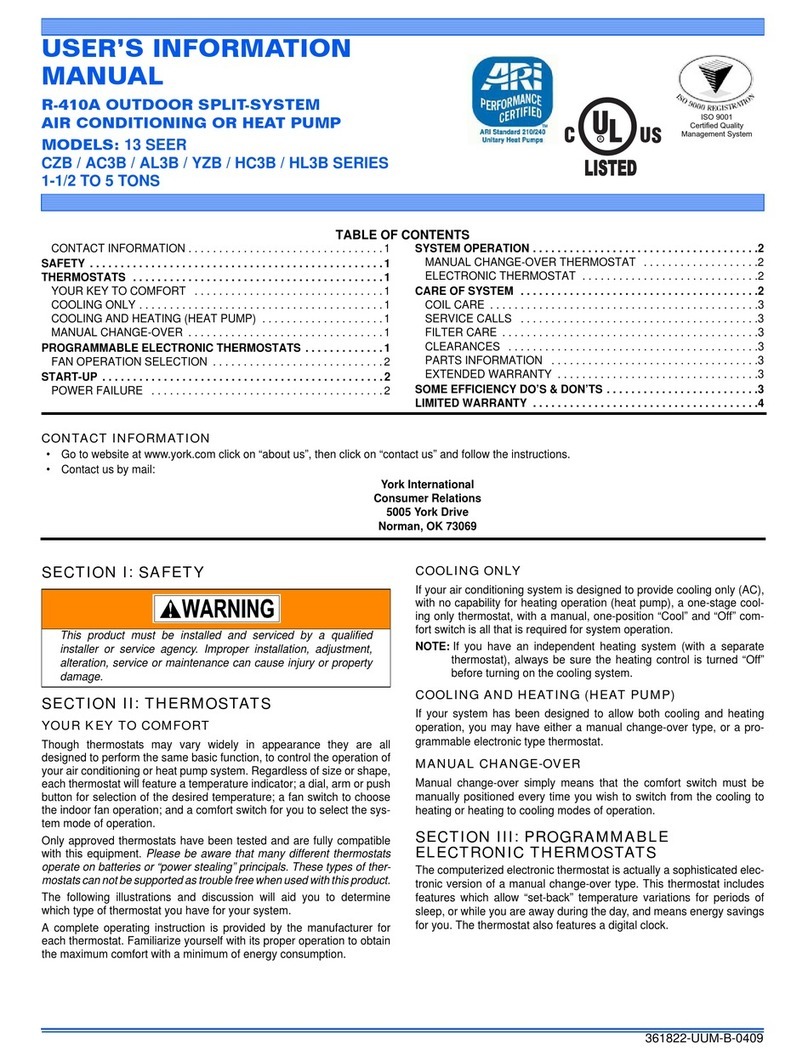
EXTENDING THE SERVICE PORTS
(see Fig. 6)
1. Loosenthescrewsthatsecuretheserviceportsinshipping
position.
2. Push the service ports through the corner post.
3. Tighten the screws to secure the service ports for installa-
tion.
INSTALLATION
Since the condensing units are shipped with a holding charge
of refrigerant-22, they can be checked for a refrigerant leak by
depressing the stem on either of the service ports that extend
through the cabinet. As soon as some internal pressure is
relieved release the stem. DO NOT release the entire holding
charge.
If the unit has already lost its holding charge, it should be leak
tested and the necessary repairs should be made. If the unit
has maintained its holding charge, you can assume that it has
no leaks and proceed with the installation.
CAUTION: Dry nitrogen should always be supplied through a
connection while it is being brazed or unbrazed
because the temperature required to make or
break a brazed joint is sufficiently high to cause
oxidation of the copper unless an inert atmosphere
is provided.The flow of nitrogen should be contin-
ued until the joint has cooled.
When making a braze connection, wrap a wet rag
around all tubing inside the unit to help prevent
damage to other components.
WARNING:The dry nitrogen should always be supplied
through a pressure regulating valve.
Beforeinstallingtheliquidlinebetweenthecondensingunitand
the evaporator coil, prepare as follows:
1. Burnish the external surfaces of the liquid connection on
the condensing unit and the end ofthe field-suppliedpiping
for the liquid line.
NOTE: Clean surfacesareessentialforawell-brazedcon-
nection.
2. Carefully clean the internal surfaces of the above. Any
particles left on these surfaces may lead to a future system
malfunction.
NOTE: Use only copper tubing that has been especially
cleaned and dehydrated for refrigerant use. If the
tubing has been open for an extended period of
time, it should be cleaned before being used.
The liquid line connections can now be brazed while maintaining
a minimum flow of dry nitrogen through the piping as follows:
1. Remove the cap from the 1/4" access port on the liquid line service
valve.
2. Connect a supply of dry nitrogen to this access port.
NOTE: The filter-drier should be installed in the liquid line
as close to the evaporator coil as possible.
Do not allow the filter-drier to be exposed to the
atmosphere for an extended period of time. Once
it absorbs moisture from the atmosphere, it loses
its effectiveness.
ThematchedairhandlersareshippedwithasmallR-22charge
and the should be checked for leaks before installation.
1. Drill a small hole through the sealing cap or disc in both the
liquidandsuctionconnection. Ifthereisapressurerelease,
the evaporator has no leaks and you can proceed with
installation. If the charge has been lost,the coilsshouldbe
leak tested and the necessary repairs made
2. Move the dry nitrogen supply from the access port on the
liquid line service valve of the condensing unit to the hole
through the suction disc on the evaporator coil.
3. Unbraze the coil’s liquid line disc while maintaining a flow
of dry nitrogen across the connection and through the hole
in the liquid line disc.
NOTE: If the liquid line has a solenoid valve, the valve
should be opened manually to permit the nitrogen
to flow freely.
4. After the disc has been removed, burnish the external
surfaces and clean the internal surfaces as outlined above.
5. Move the dry nitrogen supply back to the access port on
the liquid line service valve.
6. Braze the liquid line to the liquid connection on the evapo-
rator coil while maintaining a minimum flow of dry nitrogen
through the liquid line, the evaporator coil and the hole in
the suction disc.
7. Unbraze the disc on the suction connection of the evapo-
rator coil while maintaining the flow of dry nitrogen.
8. After the disc has been removed, burnish the external
surfaces and clean the internal surfaces as outlined above.
Thesuctionpipingcannowbebrazedtothesuctionconnection
on the evaporator coil while maintaining a minimum flow of dry
nitrogen.
Before brazing the suction line to the condensing unit;
1. Move the dry nitrogen supply to the access port on the
suction service valve of the condensing unit.
2. Burnish the external surfaces and clean the internal sur-
faces of both the suction connection and the suction piping.
The suction line can now be brazed to the suction connection
on the condensing unit while maintaining the flow of dry nitro-
gen.
After the liquid and suction lines have been installed, the
system should be evacuated and charged.
EVACUATION AND CHARGING
With the liquid and suction line service valves closed, connect
a vacuum pump through a charging manifold to the access
ports on both the liquid and suction line service valves.
NOTE: The vacuum pump connection should be short and
no smaller than 3/8" O.D.
Therefrigerantlinesandtheevaporatorcoilcannowbeevacu-
ated to 500 Microns without disturbing the charge in the con-
denser coil or the compressor.
After proper evacuation and dehydration, charge refrigerant
through the access port on the liquid line service valve allowing
the vacuum to draw in as much refrigerant as possible.
CAUTION: Do not charge liquid refrigerant through the com-
pressor suction connection.
CAUTION: Do not attempt to start the compressor without at
least 8 hours of crankcase heat or compressor
damage will occur.
Tocontinue chargingrefrigerant,opentheliquidandthesuction
line service valvesfully. Turnthestem oftheliquidservicevalve
clockwise 1/4turn to open its access port for reading pressure.
Startthe compressor (after8hoursofcrankcase heat),turnthe
stem ofthe suction line service valveclockwise 1/4turnto open
its service port and continue to charge refrigerant gas through
this suction access port until you meet the conditions shown
on the charging curve, Fig. 7.
Open the liquid and vapor line service valves fully to close their
access ports after the system has been charged.
550.23-N6Y
Unitary Products Group 9

